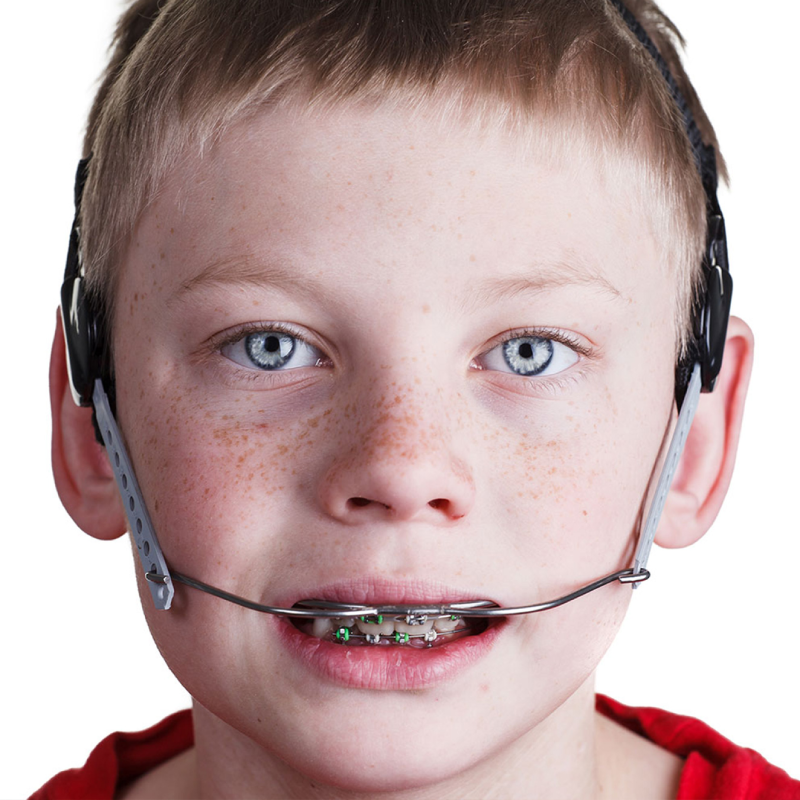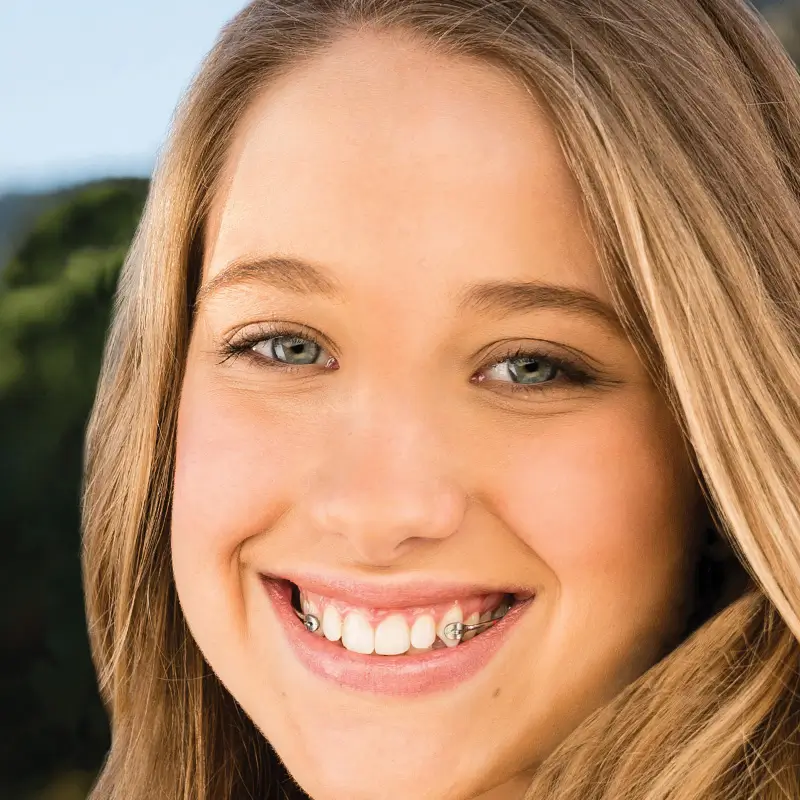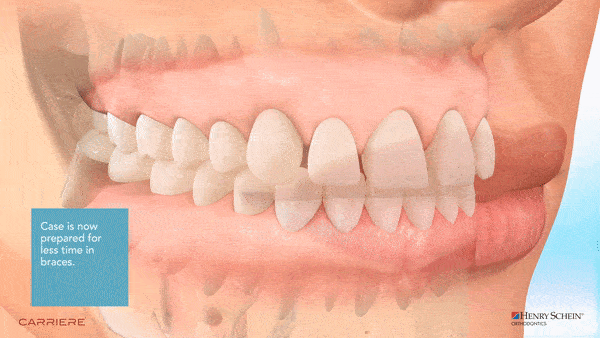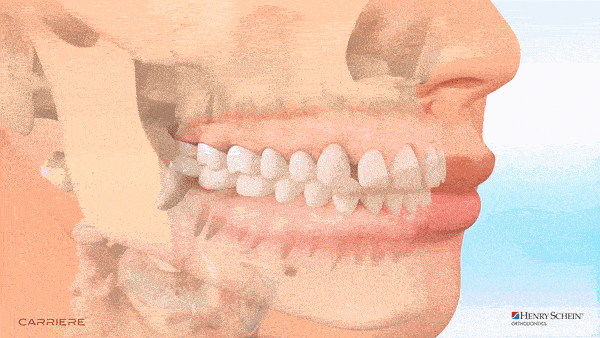CARRIERE® APPLIANCE
Have you ever heard of the headgear appliance? The old, archaic and thoroughly unenjoyable appliance that used to be the go-to for fixing an ‘overbite’ in the ‘80s and ‘90s? It turns out that with advancements in technology we now have the Carriere® Appliance to help with bite correction!
THE PROBLEM
It is not uncommon for one’s upper teeth to stick out in front of their lower teeth. In technical terms this is referred to as a Class II malocclusion, the prevalence of which is approximately 20-25% of the population. For whatever reason, this type of bite is referred to by the general public as an “overbite” which is not technically correct. The correct term is “overjet” — and the way that we explain it is that the upper teeth “jet” out in front of the lower teeth.
Overbite is an unrelated problem and you can read more about the differences on our common orthodontic issues page. It is possible to have an overjet and overbite simultaneously, or one without the other. Regardless, both are less than ideal and require orthodontic treatment to fix. Aside from the appearance, having an overjet can lead to jaw-joint issues and wear of the back teeth!
THE SOLUTION
Each of our patients present with their own set of conditions so an assessment is made on an individual basis but in general when fixing an overjet we want the upper teeth to come back and the lower teeth to come forward. Whether or not any jaws grow forward or backward ultimately depends on one’s age and their genetics. We ideally like to time the overjet correction around the growth spurt as that gives the best chance to accelerate any jaw growth that has been pre-programmed by DNA. Although we can improve an overjet in an adult, it is all tooth movement and no jaw growth. For adults that seek a significant profile change we recommend jaw surgery.
Now that we’ve cleared this up, there are many different appliances that we can use to fix an overjet. Some of the common names you have likely read or heard about are Headgear, Herbst, MARA, and Crossbow appliances. They all ultimately work in the same way but with the Carriere Motion Appliance we’ve chosen an appliance that we believe to be the most efficient, convenient, and comfortable!
BENEFITS OF THE CARRIERE® MOTION APPLIANCE
A picture is worth a thousand words. Orthodontic advancements make treatment much easier than ever before.
Past Solution
Headgear
- Uncomfortable
- Inconvenient
- Intrusive
- Noticeable
- Restricted


Today’s Solution
Carriere®
- Comfortable
- Convenient
- Hygienic
- Discreet
- Flexible
THE PROCESS
The Carriere® Motion Appliance is used for approximately 6 months. After this period of time, the overjet is corrected but the teeth are not aligned. In fact, during the process of fixing the overjet, the upper front teeth tend to actually get spaced out and orthodontic treatment is then required to close the spaces and align the rest of the teeth with either braces or Invisalign for 12-18 months.
The appliance consists of 3 components :
1. Bars – metal – that are glued onto your upper side teeth.
2. Elastics that are removable, worn full time, and replaced throughout the day.
3. An appliance covering the lower teeth.
CARRIERE® APPLIANCE OPTIONS
For the appliance on the lower there are two options, depending on how we will be straightening your teeth after:

NOT SURE IF YOU WANT BRACES OR INVISALIGN®?
In these situations, we start with the clear plastic retainer on the lower at the beginning and once the overjet is corrected, we decide which direction to go. This way there’s no pressure and you have 6 months to decide. The plastic retainer is also like a training device to see if you will be comfortable with removable aligners. However, the benefit of starting with Invisalign® from day 1 is that it speeds up your treatment time since we start aligning your lower teeth at the same time that we are fixing your overjet.


FAQS
Interested in straightening your teeth without braces? Here are some common
questions we get asked about Invisalign® treatment.





